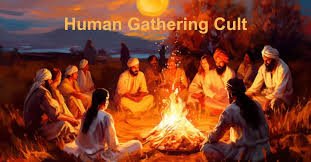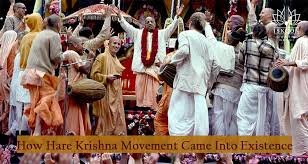Human Gathering Cult: Understanding Its Origins and Impact

The concept of the human gathering cut has sparked significant interest among sociologists, historians, and cultural analysts. This phenomenon, often shrouded in mystery, carries deep historical and sociocultural implications. It is essential to explore its roots, influence, and the various perceptions surrounding it to fully comprehend its essence.
Table of Contents
What is the Human Gathering Cult?
At its core, the human gathering cut refers to groups or communities that unite individuals around a shared belief, practice, or purpose. These gatherings often revolve around spiritual, ideological, or societal themes, creating a sense of belonging among participants. The term “cult” has evolved over time, encompassing both benign and controversial associations. However, the human gathering cul is distinct for its emphasis on collective unity and shared experiences.
Historical Roots of the Human Gathering Cult
The origins of the human gathering cut can be traced back to ancient civilizations. From tribal rituals in Africa to spiritual assemblies in Mesopotamia, humanity has always sought connection through communal gatherings. These early manifestations were often tied to religious or cultural practices, emphasizing the importance of collective identity and purpose.
For instance, the druids of ancient Celtic societies organized large gatherings that were both spiritual and social. Similarly, ancient Greek mystery religions brought individuals together to partake in secretive rituals that strengthened community bonds. These early examples highlight the enduring nature of the human gathering cult throughout history.
Characteristics of the Human Gathering Cult

Several features define the human gathering cut, making it a unique aspect of societal structures:
- Shared Beliefs and Practices Members of a human gathering cul often adhere to a set of beliefs or practices that define their collective identity. These beliefs can range from religious doctrines to social ideologies.
- Community Bonding A hallmark of the human gathering cul is its emphasis on creating a strong sense of community. Participants find comfort and purpose in their shared experiences.
- Rituals and Ceremonies Rituals are integral to the human gathering cut, serving as a means to reinforce group identity and values. These rituals can vary widely, from symbolic acts to elaborate ceremonies.
- Charismatic Leadership Many human gathering cuts are led by charismatic figures who inspire and guide their followers. These leaders often become central to the cult’s identity.
Modern Manifestations of the Human Gathering Cult
In today’s world, the human gathering cult manifests in diverse forms, from religious sects to social movements and even corporate cultures. Understanding these modern iterations sheds light on the evolving nature of such gatherings.
Religious Groups
Religious sects often embody the principles of the human gathering cult, bringing people together under a shared spiritual belief. These groups may emphasize communal worship, moral teachings, and a collective mission to spread their faith.
Social Movements
Social movements can also resemble a human gathering cult in their structure and dynamics. Environmental activism, for example, brings individuals together to address climate change through shared values and collective actions.
Corporate Cultures
Even in the corporate world, the human gathering cult concept finds relevance. Companies that prioritize team-building activities, shared missions, and unique workplace cultures often create a sense of unity akin to cult-like gatherings.
Positive Impacts of the Human Gathering Cult
The human gathering cult can have numerous benefits for individuals and communities. These positive aspects highlight why such gatherings persist across cultures and time periods.
- Sense of Belonging Being part of a human gathering cult offers individuals a sense of belonging and acceptance. This connection fosters emotional well-being and reduces feelings of isolation.
- Collective Empowerment Through unity and shared goals, members of a human gathering cult often feel empowered to enact change, whether within their communities or on a broader scale.
- Cultural Preservation Many human gathering cults play a vital role in preserving cultural traditions, ensuring that rituals, languages, and customs are passed down through generations.
- Personal Growth Participation in a human gathering cult can lead to personal growth as individuals engage in self-reflection, learning, and meaningful interactions with others.
Challenges and Controversies Surrounding the Human Gathering Cult
Despite its positive attributes, the human gathering cult is not without challenges and controversies. Understanding these aspects is crucial to gaining a balanced perspective.
Manipulation and Exploitation
Some human gathering cults have been criticized for manipulating their members, exploiting them emotionally or financially. Such cases often involve authoritarian leadership and a lack of transparency.
Social Isolation
In certain instances, a human gathering cult may encourage members to distance themselves from non-members, leading to social isolation and strained relationships.
Stigmatization
The term “cult” often carries a negative connotation, leading to stigmatization of groups that may not align with mainstream values. This stigma can hinder the group’s ability to function and grow.
Case Studies: Notable Examples of the Human Gathering Cult
Exploring specific examples of the human gathering cult provides deeper insights into its dynamics and impact.
The Hare Krishna Movement

Originating in the 1960s, the Hare Krishna movement exemplifies a spiritual The Hare Krishna Movement focused on communal worship and devotion. Despite initial controversies, it has grown into a respected global organization.
Greenpeace
Greenpeace, an environmental advocacy group, embodies the principles of a human gathering cult through its commitment to environmental preservation and its emphasis on collective action.
Modern Startups
Startups like Google and Apple have cultivated unique corporate cultures that resemble a human gathering cult, emphasizing innovation, teamwork, and shared goals.
The Future of the Human Gathering Cult
As societies evolve, the human gathering cult will likely continue to adapt, reflecting new cultural, technological, and ideological trends. The rise of virtual communities and online movements represents a modern twist on traditional gatherings, demonstrating the enduring relevance of this phenomenon.
Also read Decipher the Code ZPV BSF BXFTPNF: Unveiling the Mystery
Conclusion
The human gathering cult remains a fascinating and multifaceted aspect of human society. Its ability to unite individuals around shared beliefs and practices highlights its enduring appeal. By examining its historical roots, characteristics, and modern manifestations, we can appreciate its role in shaping human connections and cultural evolution. Whether viewed as a source of empowerment or a subject of controversy, the human gathering cult offers valuable insights into the complexities of collective human behavior.





